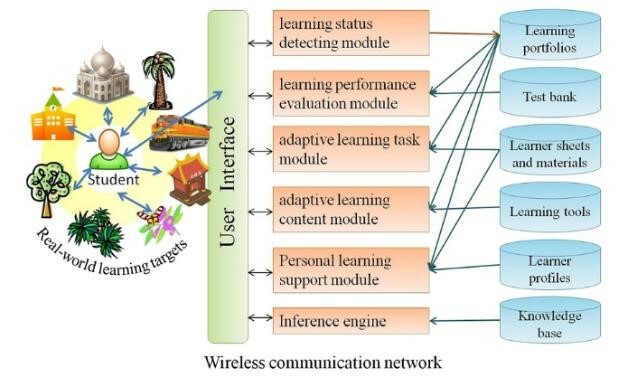e-Learning Ecologies MOOC’s Updates
Ubiquitous Computing- a smart learning environment
Ubiquitous Computing- a smart learning environment
Ubiquitous Computing is a smart learning environment. In a traditional classroom (didactic pedagogy) the teacher is the main source of information and students are required to stay in the same place and participate simultaneously in the same activity, whereas in a situation of Reflexive Pedagogy i.e. ubiquitous learning (Learning Anywhere, Anytime, Anyhow), activities can be conducted in a different space and time for each student. Smart learning environments supported by technologies should not only enable learners to digital resources and interact with the learning systems in any place and at any time, but also actively provides them with the necessary learning guidance, supportive tools or learning suggestions in the right place, at the right time, and in the right form (Hwang 20141).
Learning anywhere, anytime, anyhow is the concept of ubiquitous learning (reflexive pedagogy). There are many different types of technologies used to support ubiquitous learning without which it is not possible. They include both hardware and software. Hardware include smart devices, e-bag, mobile phone, tabs, iPAD’s, Personal Digital Assistants (PDAs), wearable device, sensors which using ubiquitous computing, cloud computing, ambient intelligence, IoT technology, etc. Software include all kinds of learning systems, learning tools, online resources, educational games which using social networking, learning analytics, visualization, virtual reality, etc. Figure 1 shows the basic frame work of a smart learning environment.
Figure 1: Framework of a smart learning environment (Hwang 20141).
Smart learning environment have a number of aspects that define them, and thereby requires an elaborate study to set apart the different aspects and investigate each individual dimensional aspect is isolation. The three aspects that a smart learning environment depend are the technological, educational and social aspects (Matthew Montebello2). In a developing country like India, technology is not accessible to everyone, and is limited to urban areas. Still many rural areas do not have mobile and internet connection and people do not have smart devices to use smart learning environment. Any technology has its own merits and demerits.
1. Hwang: Definition, framework and research issues of smart learning environments – a context aware ubiquitous learning perspective. Smart Learning Environments 2014 1:4. https://doi.org/10.1186/s40561-014-0004-5
2. Matthew Montebello: Smart Ubiquitous Learning Environments, International Journal of Education (IJE) Vol.5, No.3/4, December 2017, DOI: 10.5121/ije.2017.5402.



Comprehensive and informative